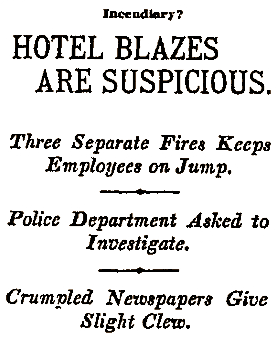 February 27, 1911. It‘s 9:30am, and Melrose Hotel manager Mark C. Bentz–nephew of M. W. Connor, owner–was in the office when stifling fumes and a dense cloud of smoke began to rise from the floor. He dashed down the stairs and into the basement where, in smoke so dense he nearly suffocated, managed at great length to extinguish the conflagration. Bentz discovered newspapers wadded up between the beams, blackened and scorched.
February 27, 1911. It‘s 9:30am, and Melrose Hotel manager Mark C. Bentz–nephew of M. W. Connor, owner–was in the office when stifling fumes and a dense cloud of smoke began to rise from the floor. He dashed down the stairs and into the basement where, in smoke so dense he nearly suffocated, managed at great length to extinguish the conflagration. Bentz discovered newspapers wadded up between the beams, blackened and scorched.
Bentz and Connor went searching through the house, cellar to garret, for some sign of a stranger, and were about to give up when the office again filled with smoke. Again there was a dash to the basement”¦nothing. This time the smokey cloud was emerging from the elevator shaft. San Bernardino papers (aha!) were extracted, smoldering, from between wooden beams therein. This time Bentz and Connor summoned the authorites.
Good thing, too, for as Sgt. Hartmeyer approached the Melrose, he saw smoke billowing from the structure”¦two alarms were sent to the fire department, a door and several windows were broken open, and a large clothes basket, filled with paper, blazing furiously, was doused.
No-one ever found out who the immolator of South Grand was, or what it was they were after. (Whether burning the Melrose inspired Kimberly to firebomb Melrose Place at the end of Season Three is a question, alas, for Darren Star.)

The original Melrose Hotel, 130 South Grand, was a thirty-room, five-story structure built by Marc W. Connor (on what was then called Charity Street) in the summer of 1889. Its architect was Joseph Cather Newsom. It was a center of fashionable goings-on, and society spectacle, and place of repose for honorable peoples.
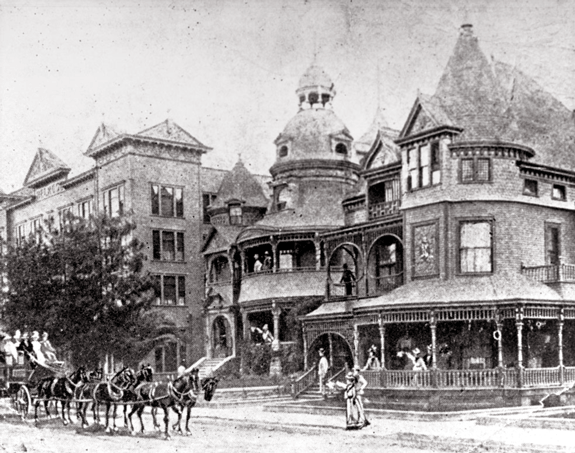
(The house in the foreground, 142 S. Grand, is the Robert Larkins residence, which became the Richelieu Hotel ca.1890.)
In early 1902 Connor erected the far more box-like Melrose Hotel, its architect Thomas J. McCarthy, at 120 just to the west of his cupola‘d wonder, which became its annex, connected to the hotel proper by an arcade.
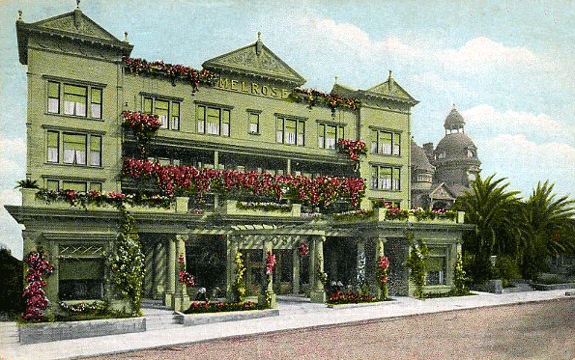
The dual Melroses persevered, all ornate of railing and careful of mitering, through the decline of, well, just about everything. By 1957, time had run out for the Melrose (one could say that Melrose place had been, if you will, canceled).

There wasn‘t anything left now but for little old ladies to amble by and mutter “oh, dear” and reminisce “I remember as if it were yesterday–the time President McKinley came to Los Angeles. We all came down and crowded around on the sidewalk–right here, right on this very spot–and listened while he made a speech from the front porch”¦”
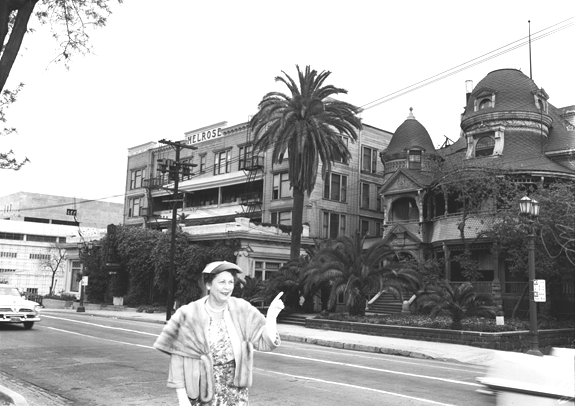
Here, Mrs. Mary Connor Rasche, whose father Marc W. built the Melrose, poses before her father’s legacy some weeks before its demolition. (What’s that lurking in the background? With those clean modern lines, nary a gable or dormer to be seen? Why, it’s Paul Williams‘ LA County Municipal Court; here‘s an image from the great you-are-here website.)
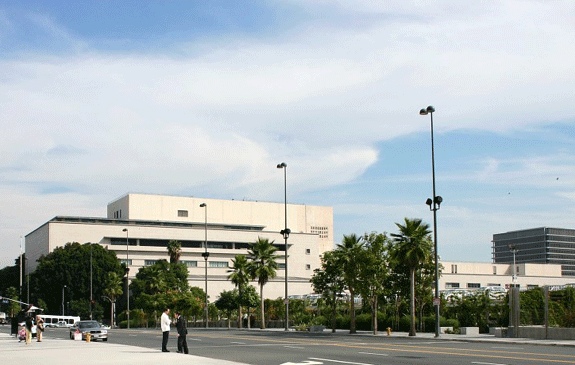
And so, it being 1957, the Melrose had to go.
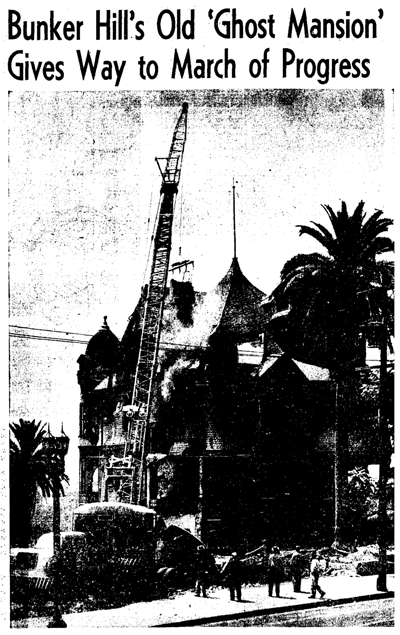
“One of the wrecking crew workmen observed that it took more than a
year to build but only eight hours of giant claw and four-ton sphere
hammering to lay the once proud building to the ground.”
Ah, the March of Progress. One can hear it goosestepping along, even now.
In any event, should you wish to visit the site of the former Melrose, please patronize this parking structure.
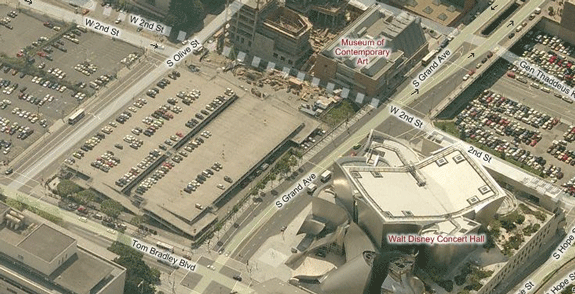
Melrose ca. 1895 courtesy California Historical Society, University of Southern California Doheny Memorial Library
Melrose 1957 courtesy Los Angeles Examiner Negatives Collection, University of Southern California Doheny Memorial Library
Other images Los Angeles Times and you-are-here.com; postcard, author’s collection

